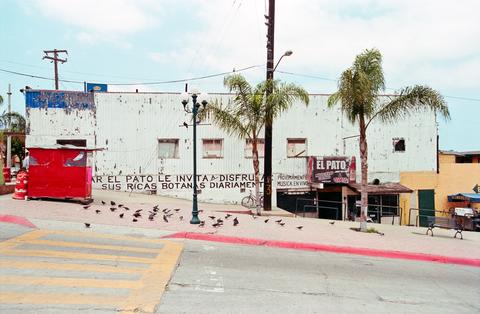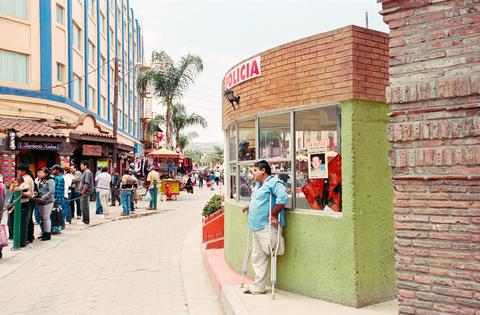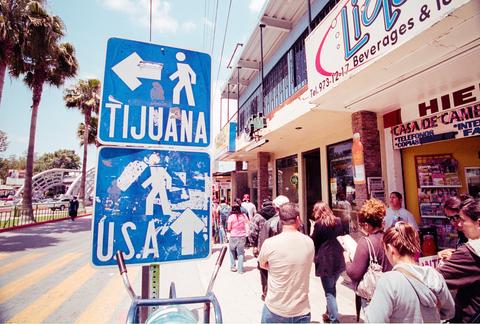I wish I was in Tijuana, eating barbecued iguana
All you hear about Mexico these days is scare stories about the drug war and resulting violence near the border. The way CNN tells it, if you dare cross, you’ll be dodging bullets and fleeing kidnappers from the first moment. Of course, some American cities are more dangerous—but no one tells you not to set foot in New Orleans.

Determined not to let the hype be my master, I set out on foot from San Diego across the border to Tijuana. I’d heard that tourism was down, but thought surely I would be among a small group of Americans, perhaps Southern California locals—but, no, I wasn’t.
Crossing the border is easy enough: you walk through the gate and you’re in Mexico. No guards, no passport checks, no one asking your business. Just walk right in. A steady stream of people walked through with me, but I was the only gringo.
That was my first clue that something was wrong. As I entered Tijuana, the route lined with border pharmacies—“English spoken!” “Lowest prices!”—with menus of medication on display like restaurant lunch offerings, it seemed odd that all of those stores were empty. The street vendors had no customers. No one browsed the souvenir shops. I walked several blocks before deciding it was no coincidence:
I was the only tourist. The only gringo. The only one with a camera.
The scare stories have worked. In an area made for American tourists, billed as the most-visited city in the world, on this day there was only one tourist: me.
The streets were not dead; they were more crowded than you’d see in most American cities, in fact, just not with Americans, and that created a real problem for me.

As I walked down Avenida Revolución, past empty stores and empty restaurants and street vendors doing no business, I became the center of attention. Every store had a proprietor standing out front, and every one of them tried to get me to come inside. With each restaurant I passed, someone ran out and showed me the menu. Every street vendor, from the legitimate ones with carts to the guy clutching a handful of “silver” jewelry, stopped me to show me his wares. I couldn’t walk ten feet without someone else accosting me.
Could I blame them? I may have been the only American they’d seen all day.
I don’t react well to this sort of thing under the best of circumstances. Trying to coax me into entering a store is a good way to get me to keep walking. Trying to sell me something is a good way to get me not to buy it. But this was crazy.
I tested various methods of fending them off. The New York City “ignore, don’t even acknowledge” method; the polite “no, thanks” method; acknowledge, but don’t speak, just a shake of the head; none of it worked very well. Replying in Spanish is not helpful: hit him with a no quiero, and he decides you habla Español, and you’ll never get rid of him.

Cable news aside, I can’t say I felt unsafe. It was daytime and the street was crowded. But it did occur to me that, if someone were looking for a target for mugging or whatever, I was it. In American cities I can rely on being a male over six feet tall who doesn’t look helpless to tilt the odds in my favor, but here, I was just the only tourist.
I just wanted to take some pictures. I managed some, but it was tough, since I couldn’t get two minutes of peace. Finally it got to me, and I left. Without spending any money, I should mention.
Crossing back into the US is a bit more involved than entering Mexico. I stood on line at the border for a good 45 minutes, just me and lots of people speaking Spanish. Passport checked, intentions questioned, camera bag X-rayed, and back to the good ol’ USA.
Tijuana looked cool. I’ll have to go back—at a better time.